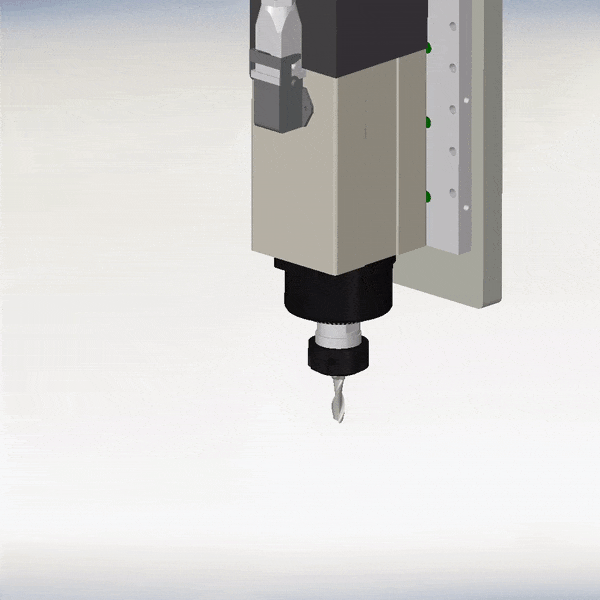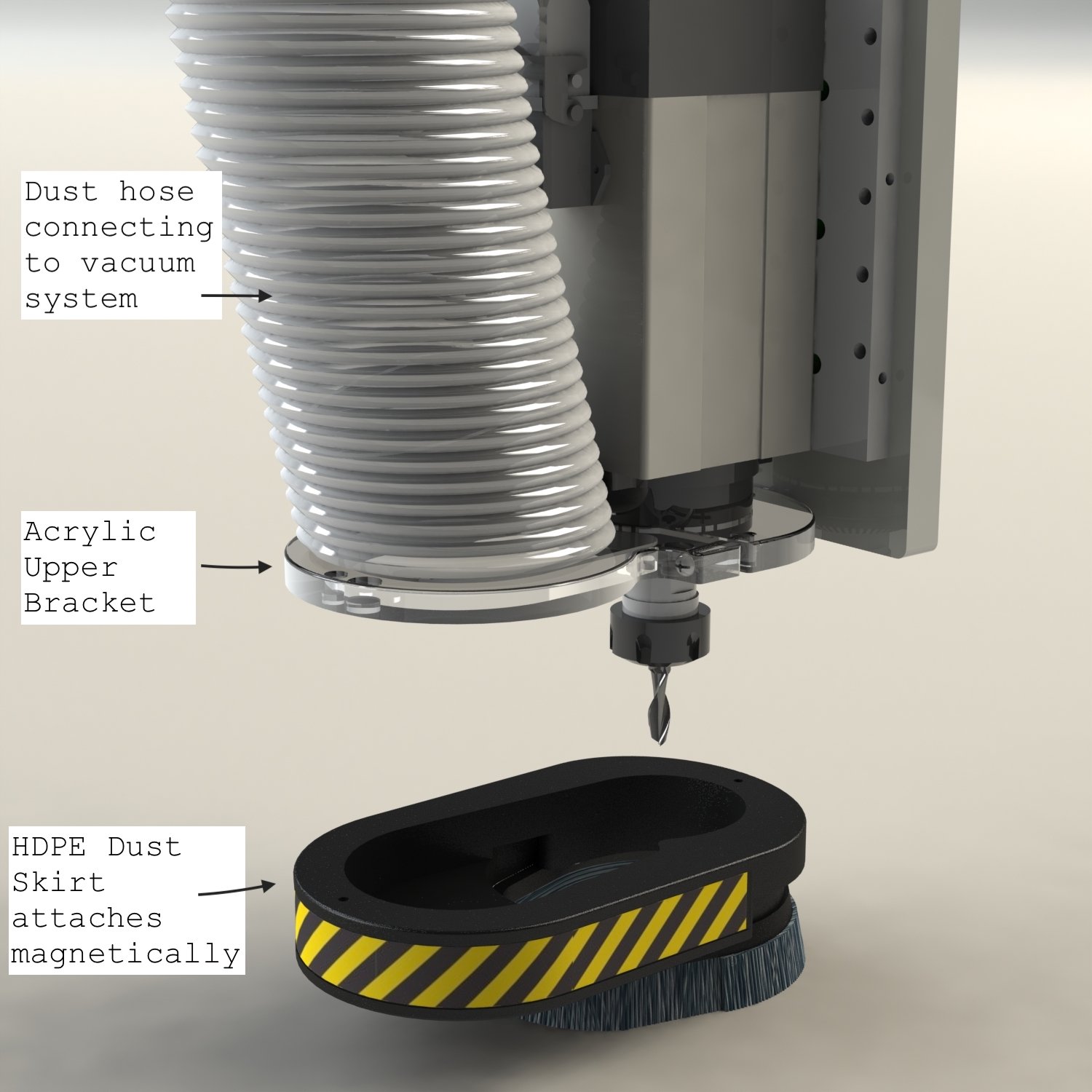Magnetic Dust Foot
A novel dust extraction system for 3-axis robotic mills
What:
Product Development at Shopbot
My Role
Design Engineer
The Team
Me
We’ve had a long-standing challenge in producing a robust dust-collection-housing for tools. It might seem to be a mundane problem. But it has been so difficult to produce something that actually works effectively, that creating one has become an initiation ritual for new engineers. Matthew has ended that ritual with an innovative and novel set of components that are now featured on all our equipment. It’s a solution that makes dust-collection really work for our customers
- Ted Hall, CEO, ShopBot Tools
Summary & Results
I developed a novel dust collection system for robotic milling tools that is safer, easier to use, and 30% less expensive to manufacture than previous designs. The design attaches magnetically to the cutting head, eliminating a key problem with previous dust collection systems: that they were hard to remove, resulting in unsafe use. Because the design was made from machined components, it was easy to adapt to different size cutting head configurations, and quickly became standard on all 3-axis milling tools at Shopbot.
Background
If not removed, dust generated during robotic machining can endanger operators via inhalation and fire risk. Dust collection systems typically consist of a vacuum hose connected to a “dust foot” positioned over the robot’s cutting head.
While working at Shopbot Tools, a maker of low-cost robotic manufacturing equipment, I noticed that customers would avoid raising or lowering Shopbot’s existing dust foot as intended because it was cumbersome to adjust; they would instead dangerously change tool bits by reaching their hands blindly beneath the dust foot.
Shopbot’s existing dust-foot also consisted of multiple components that were expensive to produce, including powder coated sheet-metal parts that had to be purchased in bulk orders for each of several different tool configurations.
The old dust foot design required a set screw and pin to remove
Design
I developed the design for a dust-foot that was held in place by 8 nickel-sized neodymium magnets. A clear acrylic upper bracket clamps to the spindle body, and an HDPE dust foot with a nylon strip brush surrounds the cutting head. Embedded magnets in the dust foot and acrylic bracket hold the dust foot in place during machining, but allow it to be quickly removed and replaced when changing cutting-bits.
A satisfying snap
Prototype -> Test -> Revise -> Repeat
I created and tested dozens of different prototypes to arrive at the final design, testing different materials, attachment mechanisms, geometries and skirt lengths.
Early prototypes: playing with different materials, attachment mechanisms, geometries and skirt lengths
Initial prototypes had only 3 neodymium magnet pairs, which in test cuts proved plenty sufficient to hold the dust foot in place. However, in testing the design with users, some expressed hesitation about sturdiness of the attachment, so I added an additional magnet pair to increase holding force and bolster user trust.
An early prototype with 3 magnets. Notice that the magnets in this prototype are visible. To account for inconsistencies in magnet thickness and reduce the risk of magnets coming loose, in future iterations I embedded the magnets from the other side of the HDPE, in slots precision machined to leave a thin layer (<1mm) of HDPE between the magnets and the surface.
I also discovered that while the magnets held well against vertical forces, lateral forces could sometimes knock the dust foot off. To remedy this, I integrated two screw heads into the the bottom dust foot, and added cavities in the acrylic top bracket into which these screw heads nested, preventing lateral motion.
2 visible screws above serve a dual purpose; holding the 3 HDPE components together, and preventing lateral slippage during cutting.
Design For Manufacturing
Before putting the design into production, I observed manufacturing staff producing a test batch, and revised my design to reduce difficulties in the manufacturing process. For example, I noticed that technicians had difficulty aligning a safety sticker on the outside of the foot, so I modified the machining process to add a recess to guide sticker placement.
Other design-for-manufacturing features:
Simplified Machining: All the components are designed to be machined from one side only, removing error introduced during part flipping.
Built in Alignment: Components snap together like lego pieces before being secured with screws or adhesive. This reduces error and removes the need for manufacturing jigs.
Easily sourced components: The design consists of less than a dozen distinct components, all in standard off-the-shelf sizes.
Components are designed to fit together like LEGO pieces during assembly.










